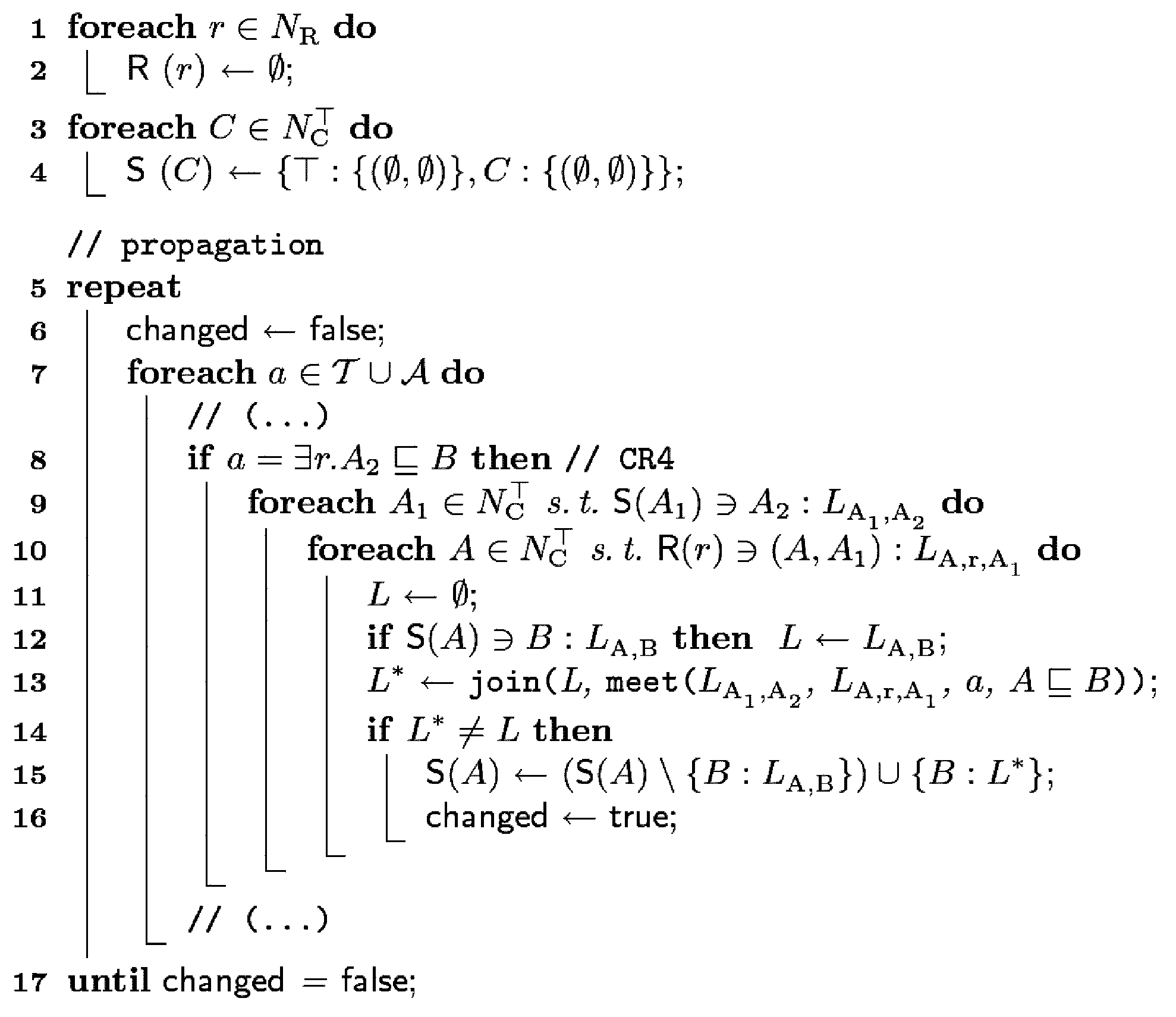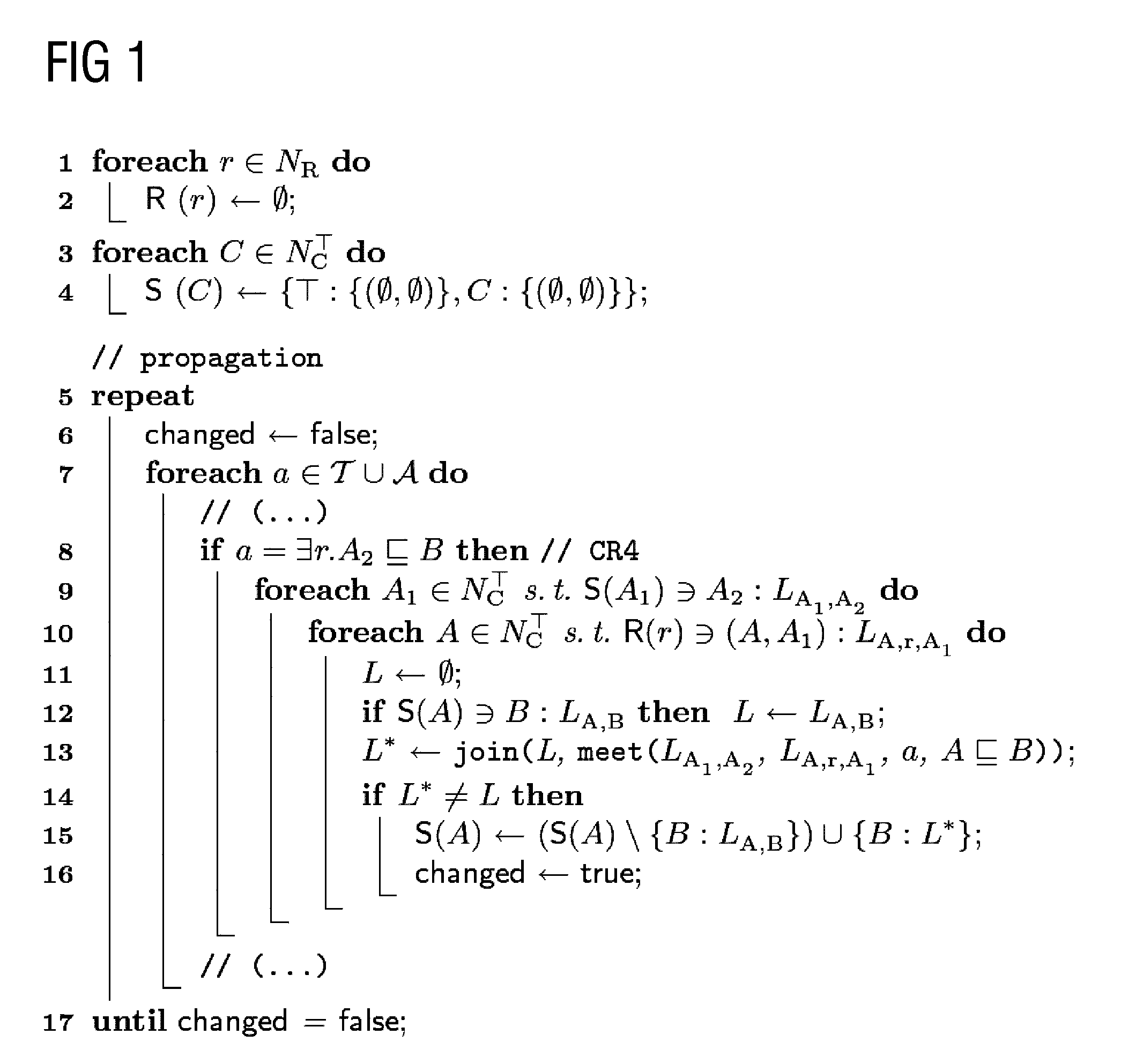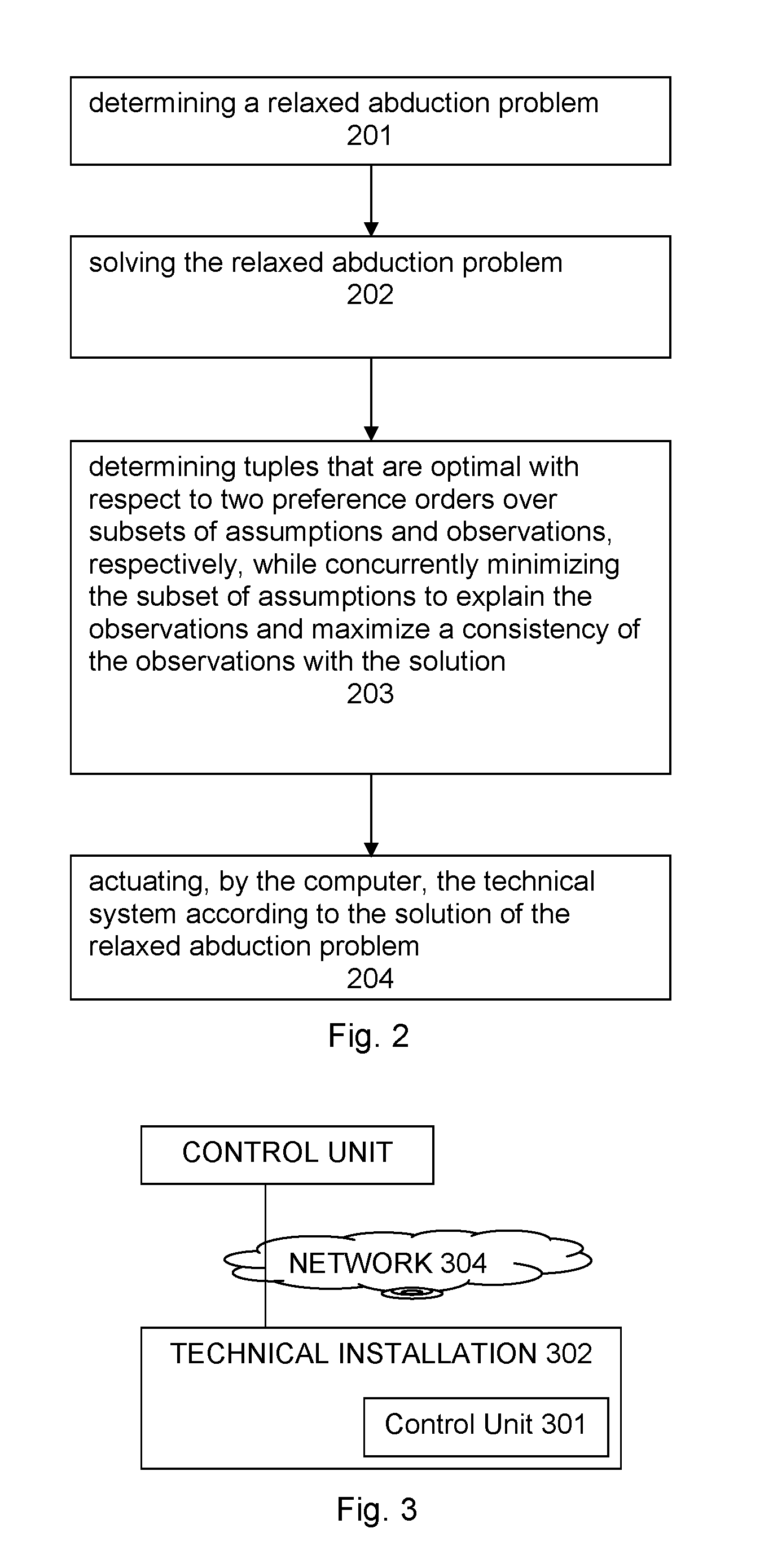Actuation of a technical system based on solutions of relaxed abduction
a technology of relaxed abduction and actuation method, which is applied in the direction of process and machine control, testing/monitoring control system, instruments, etc., can solve the problems of observation existence that cannot be explained with the given model, and restrict the practical usability of abduction-based information interpretation
- Summary
- Abstract
- Description
- Claims
- Application Information
AI Technical Summary
Benefits of technology
Problems solved by technology
Method used
Image
Examples
example
Sensitivity to Incorrect Information
[0083]A production system comprises a diagnosis unit, wherein the production system has been mapped using a model. The model indicates that a fluctuating supply of current is manifested by intermittent failures in a main control unit, while the communication links remain operational and a mechanical gripper in the production system is unaffected (the observations are deemed to be modeled as a causal consequence of the diagnosis).
[0084]It is now assumed that a new additional vibration sensor observes low-frequency vibrations in the system. If the diagnostic model has not yet been extended in respect of this vibration sensor, which means that the observations of the vibration sensor also cannot be taken into account, the low-frequency vibrations delivered by the vibration sensor will unsettle the diagnostic process and prevent effective diagnosis in relation to the supply of current, even though the data delivered by the vibration sensor could actua...
PUM
 Login to View More
Login to View More Abstract
Description
Claims
Application Information
 Login to View More
Login to View More - R&D
- Intellectual Property
- Life Sciences
- Materials
- Tech Scout
- Unparalleled Data Quality
- Higher Quality Content
- 60% Fewer Hallucinations
Browse by: Latest US Patents, China's latest patents, Technical Efficacy Thesaurus, Application Domain, Technology Topic, Popular Technical Reports.
© 2025 PatSnap. All rights reserved.Legal|Privacy policy|Modern Slavery Act Transparency Statement|Sitemap|About US| Contact US: help@patsnap.com



